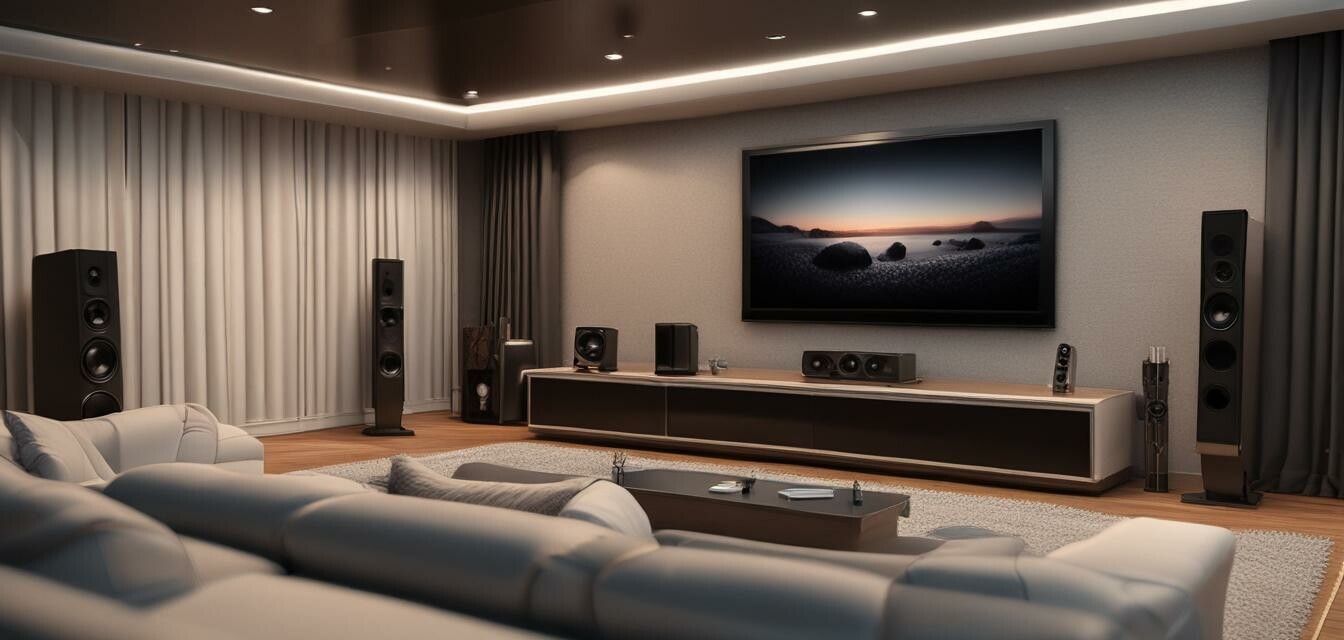
The Importance of Room Acoustics in Home Theater
Key Takeaways
- Room acoustics dramatically affect audio quality in home theater systems.
- Understanding the acoustics of your space can enhance your listening experience.
- Using acoustic treatments like panels, diffusers, and bass traps can optimize sound performance.
- Speaker placement is crucial for achieving the best sound experience.
- Regularly testing and adjusting your acoustic setup can lead to continuous improvement.
When it comes to creating an immersive home theater experience, most people invest heavily in equipment like 4K TVs and high-fidelity speakers. However, one essential factor often overlooked is the acoustics of the room. Room acoustics can significantly influence how sound travels and resonates, directly affecting the overall audio performance of your setup. In this article, we will explore the importance of room acoustics and provide practical tips for optimizing your space.
Understanding room acoustics
Room acoustics refers to how sound waves interact with the surfaces and objects in a room. Factors such as wall materials, furniture, ceiling height, and room shape play a vital role in sound quality. Poor acoustics can lead to echoes, muffled sounds, and an inconsistent listening experience.
Key elements of room acoustics
| Element | Description |
|---|---|
| Reflection | Sound waves bounce off surfaces, which can create echoes and affect clarity. |
| Absorption | Materials like carpets and curtains absorb sound waves, reducing echoes. |
| Diffusion | Scattering sound waves evenly throughout the room helps to create a balanced audio experience. |
| Resonance | Higher frequencies can cause specific rooms to vibrate, affecting sound quality. |
How room acoustics affect audio performance
The way sound waves move in a room can significantly modify what you hear. Poor acoustics can lead to undesirable effects, such as:
- Muddied sound: When sound waves reflect off walls and create echoes, it can lead to a lack of clarity.
- Frequency buildup: Some frequencies may be amplified while others fade away, creating an imbalanced sound.
- Localization issues: Accurate placement of sound sources can be hindered, making it difficult to pinpoint where a sound is coming from.
Common acoustic problems
Identifying the common problems in your room's acoustics can help you devise effective solutions:
- Flat, boxy sound caused by parallel walls.
- Excessive echo and reverberation.
- Boomy bass due to improper placement of subwoofers.
Optimizing your home theater acoustics
Improving your room's acoustics can drastically enhance your home theater experience. Here are some strategies to consider:
- Speaker placement: Position your speakers according to the guidelines for optimal sound dispersion.
- Use acoustic panels: Installing foam panels or fabric-wrapped boards on walls can help absorb sound.
- Implement bass traps: These can effectively reduce low-frequency muddiness in your system.
- Consider diffusers: Adding diffusing elements can help scatter sound waves and create a more balanced atmosphere.
- Test different layouts: Move furniture and speakers to experiment with different arrangements for the best sound.
Testing and assessment
Once you’ve made some changes, evaluating the sound quality in your home theater is essential. Here are some ways to test and refine your setup:
- Use test tones or music tracks known for clarity to assess sound quality.
- Involve a friend for a second opinion, as different listening ears may spot issues you might have missed.
- Perform regular tests after making any changes to the layout or acoustics.
Conclusion
Room acoustics play a crucial role in maximizing the audio experience in your home theater. By understanding how sound behaves in your space and implementing simple solutions, you can greatly improve clarity, balance, and enjoyment. For more insights on enhancing your listening experience, explore our Buying Guides and keep up with the latest News and Trends in audio technology.
Pros
- Enhanced audio clarity and detail.
- Improved overall sound experience.
- Customizable to fit your specific room layout.
Cons
- Potential cost for acoustic treatments.
- Time-consuming to test and adjust settings.
- May require professional help for best results.